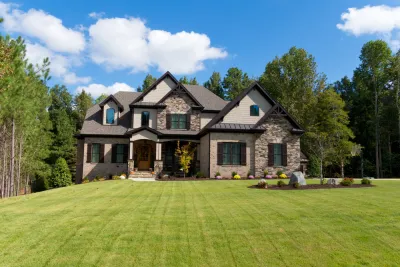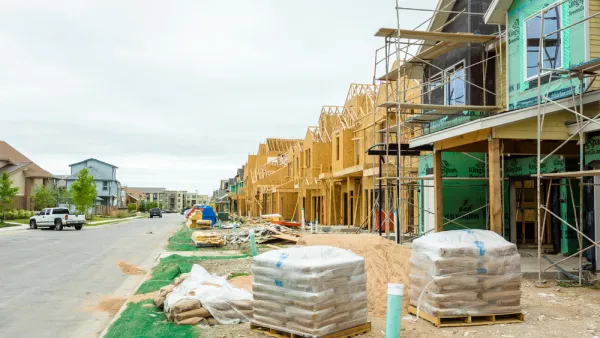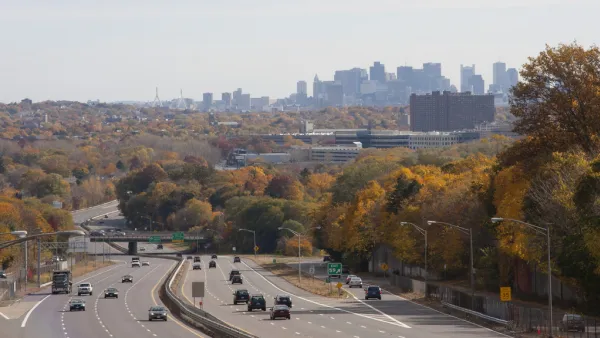The U.S. remains largely a suburban nation, though central cities are experiencing a great comeback after years of population loss. But what exactly is a suburb? A new report from the Urban Land Institute provides answers by providing subcategories.

"The report, Housing in the Evolving American Suburb [PDF], provides a new analytic framework developed by RCLCO [Real Estate Advisors] for the ULI Terwilliger Center for Housing that describes different kinds of suburbs based on the key factors that define and determine their housing markets," writes Robert Krueger in a press release for ULI.
The report classifies and compares suburbs in the 50 largest metro areas in the U.S. – shown in a searchable online map – and assesses the key issues that will shape suburban residential demand and development in the years ahead.
Krueger list seven bullets that show the dominance of suburbs over central cities in terms of population, employment, and other demographics. Two exceptions:
- Between 2005 and 2010, employment in suburban areas remained stagnant, while it increased by 8.2 percent in urban areas. But between 2010 and 2014, jobs increased by 9 percent in suburbs versus 6 percent in urban areas.
- The regional variation in home values between suburbs and cities is substantial. On average, the median home value in urban areas is $365,000 compared to $305,000 in suburban areas.
Among suburbs, the report considers three categories:
- High-density suburban: relatively dense outer neighborhoods and commercial corridors.
- Suburban: well-populated neighborhoods where most of the housing stock consists of single-family detached homes.
- Low-density suburban: neighborhoods where most of the housing stock consists of single-family detached homes, and where there is some undeveloped land.
One disturbing characteristic they all share: "Auto dependence is uniformly high across all types of suburbs, even in those with better access to transit."
The report further differentiates suburbs into "five suburban paradigms" ranging from "established high-end suburbs" to "greenfield value suburbs." See page 5 of report [PDF] for their definitions.
Laura Kusisto of The Wall Street Journal was the first to report on the analysis. The "research shows that suburbs are continuing to outstrip downtowns in overall population growth, diversity and even younger residents," writes Kusisto (also see short summary of the article, fully accessible on Builder).
The Journal's '"binary classification" prompted Joe Cortright to review her article for City Observatory:
Last Friday’s Wall Street Journal came out with another eye-catching headline story in the city versus suburbs battle of the bands: “Suburbs outstrip cities in population growth, study finds."
On its face, the article seems to imply that much of what has been written in recent years about a rebound in cities is either wrong or somehow overstated.
Cortright suggests to his readers that they read the ULI press release to understand how their report is not an urban vs. suburban analysis, but a suburb vs. suburb analysis. In addition to Krueger's press release, see a short review of the report by
Hat tip to Tom Rubin via Sierra Club Bay Area Transportation Forum.

Analysis: Cybertruck Fatality Rate Far Exceeds That of Ford Pinto
The Tesla Cybertruck was recalled seven times last year.

National Parks Layoffs Will Cause Communities to Lose Billions
Thousands of essential park workers were laid off this week, just before the busy spring break season.

Retro-silient?: America’s First “Eco-burb,” The Woodlands Turns 50
A master-planned community north of Houston offers lessons on green infrastructure and resilient design, but falls short of its founder’s lofty affordability and walkability goals.

Test News Post 1
This is a summary

Analysis: Cybertruck Fatality Rate Far Exceeds That of Ford Pinto
The Tesla Cybertruck was recalled seven times last year.

Test News Headline 46
Test for the image on the front page.
Urban Design for Planners 1: Software Tools
This six-course series explores essential urban design concepts using open source software and equips planners with the tools they need to participate fully in the urban design process.
Planning for Universal Design
Learn the tools for implementing Universal Design in planning regulations.
EMC Planning Group, Inc.
Planetizen
Planetizen
Mpact (formerly Rail~Volution)
Great Falls Development Authority, Inc.
HUDs Office of Policy Development and Research
NYU Wagner Graduate School of Public Service



























